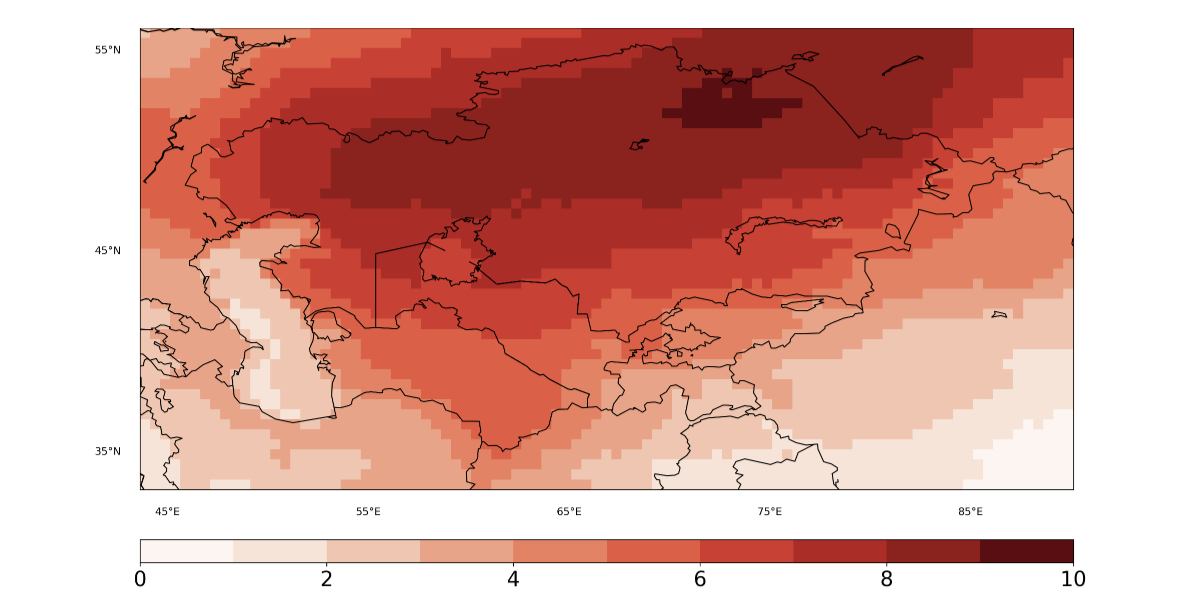Abstract
We study the impact of recent global warming on extreme climatic events in Central Asia (CA) for 1901-2019 by comparing the composite representation of the observational climate with a hypothetical counterfactual one that does not include the long-term global warming trend. The counterfactual climate data is produced based on a simple detrending approach, using the global mean temperature (GMT) as the independent variable and removing the long-term trends from the climate variables of the observational data. This trend elimination is independent of causality, and the day-to-day variability in the counterfactual climate remains preserved. The analysis done in the paper shows that the increase in frequency and magnitude of extreme temperature and precipitation events can be attributed to global warming. Specifically, the probability of experiencing a +7 K temperature anomaly event in CA increases up to seven times in some areas due to global warming. The analysis reveals a significant increase in heatwave occurrences in Central Asia, with the observational climate dataset GSWP3-W5E5 (later called also factual) showing more frequent and prolonged extreme heat events than hypothetical scenarios without global warming. This trend, evident in the disparity between factual and counterfactual data, underscores the critical impact of recent climatic changes on weather patterns, highlighting the urgent need for robust adaptation and mitigation strategies. Additionally, using the self-calibrated Palmer drought severity index (scPDSI), the sensitivity of dry and wet events to the coupled precipitation and temperature changes is analyzed. As a result, the areas under dry and wet conditions are enhanced under the observational climate compared to a counterfactual scenario, especially over the largest deserts in CA. The expansion of the dry regions aligns well with the pattern of desert development observed in CA in recent decades.
https://www.researchsquare.com/article/rs-2106031/v1

